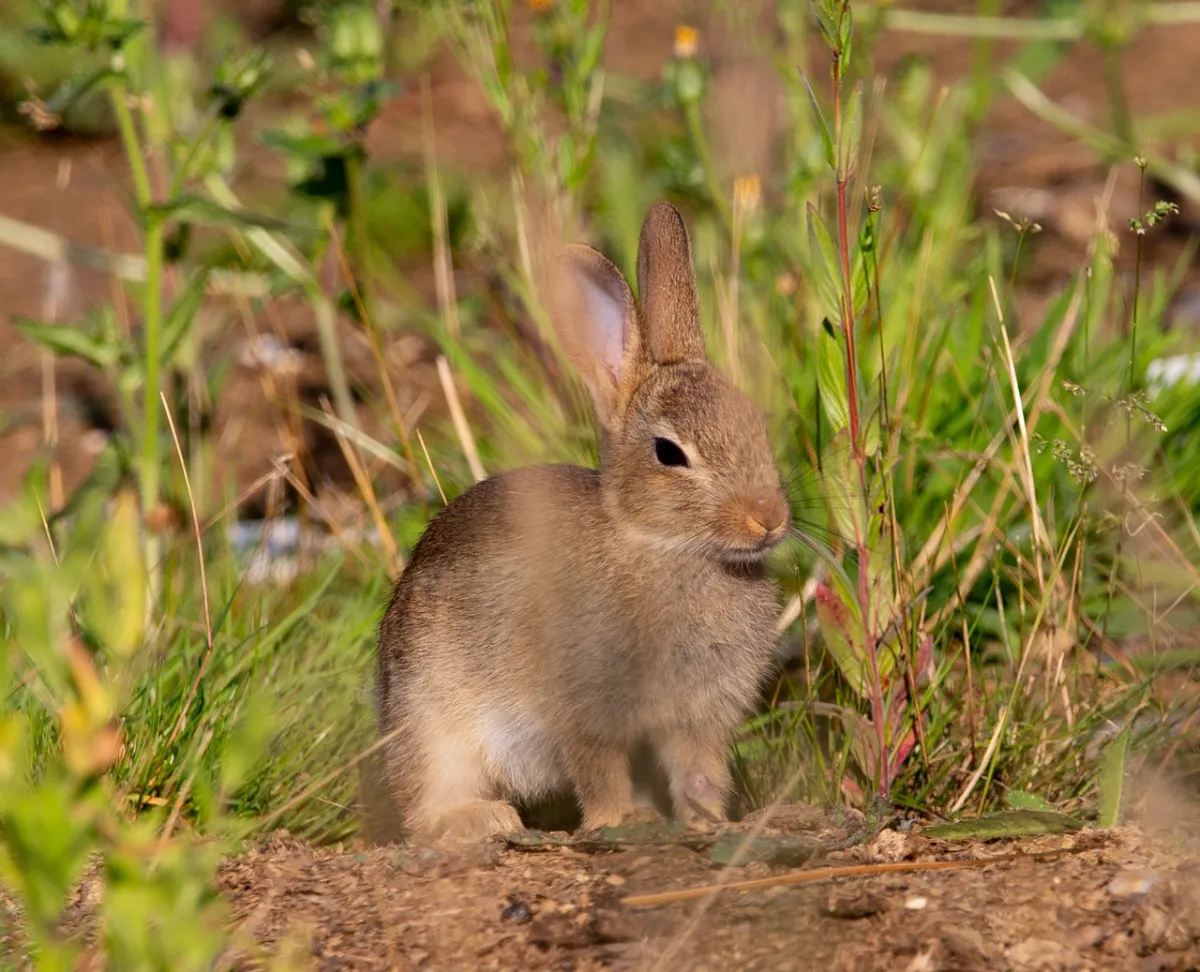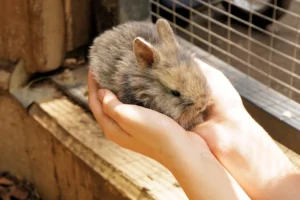Do rabbits really have the ability to climb trees?
You might be surprised to learn that these furry creatures, known for their agility on the ground, are not typically equipped for tree-climbing adventures.
This article delves into the anatomy, behavior, and natural habitat of rabbits to examine whether there is any truth to the myth.
Through careful observations and studies, we aim to debunk this popular belief and shed light on the true abilities of these adorable animals.
In This Article
- 1 Key Takeaways
- 2 The Anatomy of Rabbits: Can They Physically Climb Trees
- 3 Exploring Rabbit Behavior: Clues to Their Climbing Capabilities
- 4 Rabbits and Their Natural Habitat: Is There a Need for Tree Climbing
- 5 Observations and Studies: Instances of Rabbits Scaling Trees
- 6 Debunking the Myth: Can Rabbits Really Climb Trees?
- 7 Frequently Asked Questions
Key Takeaways
- Rabbits have strong hind legs designed for jumping and agility.
- Their long claws provide excellent grip for climbing trees.
- The flexibility of their spines allows them to navigate through branches.
- Tree climbing is not part of their natural skill set.
The Anatomy of Rabbits: Can They Physically Climb Trees
Can you believe that rabbits can actually climb trees? It may come as a surprise, but rabbits have remarkable agility and are capable of ascending trees. This ability is due to their unique tree dwelling adaptations, which allow them to navigate their way through branches and trunks.
Their strong hind legs, designed for jumping and agility, enable them to leap onto low-hanging branches. Additionally, their long claws provide them with excellent grip, allowing them to securely cling onto the bark while they climb. Rabbits also possess a flexible spine, enabling them to twist and turn their bodies as they navigate through the intricate network of branches.
These tree dwelling adaptations showcase the incredible versatility and adaptability of rabbits, making them capable of surprising feats like climbing trees.
Exploring Rabbit Behavior: Clues to Their Climbing Capabilities
You may be surprised to learn that exploring rabbit behavior can provide clues to their impressive climbing capabilities. While rabbits are primarily known for their ability to hop and sprint, they also possess surprising agility when it comes to climbing trees. Understanding their behavior can shed light on how they accomplish this feat.
Here are some fascinating insights into rabbit behavior and their tree climbing techniques:
Observation and Analysis:
- Rabbits are meticulous observers, carefully assessing their surroundings before making any move.
- They analyze the structure and stability of trees, identifying the best branches for climbing.
- Their keen sense of balance allows them to navigate even the narrowest of branches.
Adaptability and Flexibility:
- Rabbits exhibit adaptability in their climbing techniques, adjusting their approach based on the tree’s characteristics.
- They use their sharp claws to grip onto bark and branches, providing stability as they ascend.
- The flexibility of their spines enables them to contort their bodies to fit within the tree’s crevices.
Confident Leaping:
- Rabbits utilize their powerful hind legs to propel themselves upwards, leaping from one branch to another.
- They employ their strong tails for balance during these daring jumps.
- Their exceptional coordination and quick reflexes ensure safe landings on higher branches.
Rabbits and Their Natural Habitat: Is There a Need for Tree Climbing
If you’re wondering whether rabbits naturally climb trees, it’s important to consider their natural habitat and the potential benefits of tree climbing for their survival.
Rabbits, in general, prefer burrows as their primary shelter and nesting place. The underground burrows provide them with protection from predators and extreme weather conditions.
However, there have been instances where rabbits have been observed climbing trees, although this behavior isn’t typical. It’s believed that tree climbing might provide rabbits with an alternative escape route when their burrows are unavailable or compromised.
Additionally, tree climbing could potentially help rabbits access new food sources, such as tree bark or leaves, during times of scarcity. However, it’s important to note that the impact of tree climbing on rabbit populations isn’t well understood and further research is needed to determine its significance in their overall survival strategy.
Observations and Studies: Instances of Rabbits Scaling Trees
Have you ever witnessed rabbits scaling trees, and if so, what were the circumstances and behaviors associated with this phenomenon? While rabbits aren’t typically known for their tree climbing abilities, there have been some rare instances where they’ve been observed engaging in this behavior.
Here are some key observations and studies regarding rabbit tree climbing behavior:
Circumstances:
- High population density and limited ground resources.
- Presence of predators or threats on the ground.
- Availability of suitable tree structures and vegetation for climbing.
Behaviors:
- Rapid vertical movements using all four limbs.
- Utilizing their sharp claws for grip and balance.
- Navigating through branches with agility and precision.
These observations suggest that rabbits may exhibit tree climbing adaptations when faced with specific environmental conditions. Further research is needed to understand the extent and frequency of this behavior across different rabbit species and habitats.
Debunking the Myth: Can Rabbits Really Climb Trees?
There is no evidence to support the claim that rabbits can climb trees, as their physical adaptations aren’t suited for such behavior. Rabbits have evolved specific adaptations that allow them to thrive in their natural habitats, but tree climbing isn’t one of them.
Unlike animals such as squirrels or monkeys, rabbits don’t possess the necessary anatomical features, such as strong limbs or grasping hands, to climb trees effectively. Their hind legs are specialized for powerful bursts of speed and agility on the ground. Additionally, their small size and lightweight bodies make it difficult for them to navigate through the branches and maintain balance.
Instead, rabbits rely on their excellent running and jumping abilities to escape predators and find food on land. So, while rabbits may exhibit impressive adaptations in other areas, tree climbing is simply not part of their skill set.
Frequently Asked Questions
What Is the Average Lifespan of a Rabbit?
Rabbits have an average lifespan of 8-12 years. Their behavior varies, but they are known for their agility and ability to jump. Their diet consists of hay, vegetables, and pellets.
How Do Rabbits Communicate With Each Other?
Rabbits communicate with intricate methods, such as body language, scent marking, and vocalizations. Their social behavior involves conveying information about danger, mating, and dominance. It’s fascinating how these furry creatures interact and express themselves.
What Are the Most Common Predators of Rabbits in Their Natural Habitat?
Predators play a crucial role in predator-prey dynamics. They can impact rabbit populations by controlling their numbers and ensuring biodiversity. It is important to understand common predators to better protect rabbits in their natural habitat.
What Is the Reproductive Cycle of Rabbits?
During the reproductive cycle, rabbits exhibit various behaviors and undergo hormonal changes. Their reproductive behavior is influenced by factors such as mating rituals and environmental cues. How do these processes contribute to the successful reproduction of rabbits?
Do Rabbits Have Any Defense Mechanisms to Protect Themselves From Predators?
Rabbits have defense mechanisms to protect themselves from predators. They rely on their ability to camouflage themselves in their surroundings, which helps them blend in and avoid detection. Additionally, their agility allows them to quickly escape from danger.





